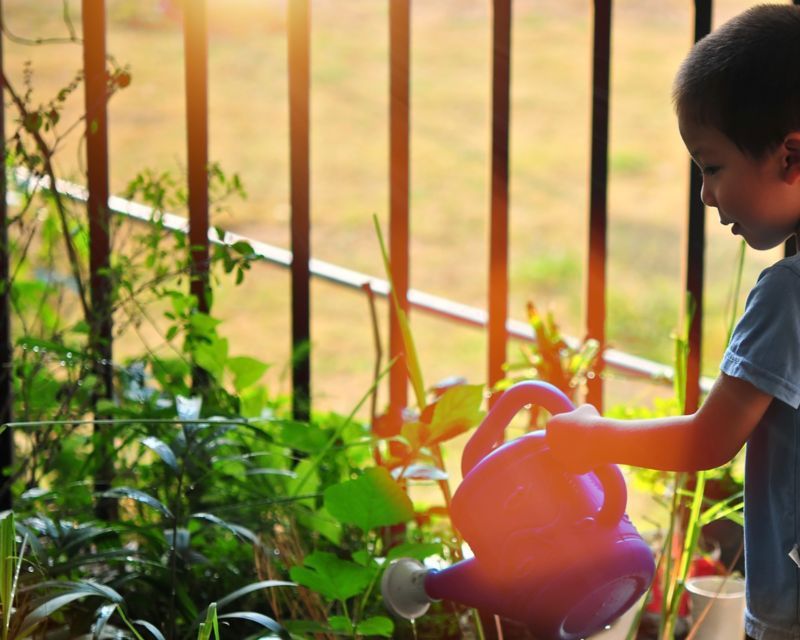Yates Account
Join now
Create a Yates account today!
Sign up to join the Yates Garden Club for monthly e-mails packed with seasonal inspiration, tips for success & exclusive promotions.
Plus if you’re a Garden Club member you can take part in the Yates Growing Community - a blog to share successes, get advice & win prizes in fun challenges along the way!

Forgot password
Enter the email address associated with your account, and we'll email you a new password.

Water is a precious resource, it’s the life source for all living things, so it’s important to consider ways in which we conserve it!
Here are our top 15 tips for saving water in your garden.
Instructions
1. Choose hardy plants
Grow plants that have good drought tolerance. Native flaxes and grasses, astelias and coprosmas have low watering requirements, once established. Dry tolerant plants will often have leathery, small or hairy leaves and are better adapted to growing in drier conditions, e.g. Succulents - easy to maintain and they come in all different shapes, sizes and shades.
2. Mulch, mulch, mulch
Mulch around the base of plants to keep moisture in the soil. Consider using organic mulches, like lucerne or pea straw, which break down and help improve the soil.
3. Apply a soil wetting agent
Yates® Waterwise™ Soil Wetter helps to break down the waxy, water repellent layer that can develop on soil and potting mix. This helps makes the most of any rain or irrigation by enabling water to penetrate down into the soil much more evenly and effectively.
4. Chicken poo is your friend
Fertilise with organic plant food such as Yates® Dynamic Lifter Organic Plant Food. This will help improve soil structure and its ability to retain water.
5. Install irrigation and tap timers
Help automate watering in your garden and ensure your plants receive the right amount of water at the right time every day. Look for tap timers with programmable watering cycles - this can help reduce water run-off and can often be suspended when rain is forecast.
6. Check for leaks
Make sure all your tap fittings and hoses aren’t leaking. One way to check this is to turn off every tap in your home, check the water meter, wait a few hours, and then check again. If there is a different reading you will need to investigate!
7. Get control over your hand watering
Invest in handy watering tools, like a hose fitting with a trigger gun, which allows you to better control the flow of water. You can find ones with different spray patterns to suit your watering needs.
8. Don’t lose water to evaporation
It’s best to give your plants a deep drink early in the morning before the harsh afternoon sun comes around. This gives the roots time to soak up the water before you lose it to evaporation. You can also apply Yates® Waterwise™ DroughtShield™, which is a specialised polymer film, over the leaves of sensitive plants to really help reduce moisture loss.
9. Recycle, recycle, recycle
From a glass of ‘old’ water to the water you use to cook your pasta in – it all counts! Before pouring it down the sink, think about whether your plants might be thirsty. You can even keep a bucket in your shower to collect the cool water until it runs hot, that would normally be lost down the drain!
10. Water lawns efficiently and effectively
When watering large areas such as lawns, use a sprinkler to help get the best coverage and to give your lawn a good deep soak. Look for one which allows you to adjust the head for flexible watering to suit different lawn shapes and sizes.
11. Don’t plant in rows
Clustering plants together leaves them less exposed to evaporation, and allows taller plants to provide shade to smaller plants. Grouping plants together by watering requirement can help you accurately prevent overwatering of those that don’t need much.
12. Raised beds retain water
Enclosed areas are more moisture rich than seeding into open ground. Even a simple retaining wall built at a depth of about 25cm can keep groundwater from leaving your garden.
13. Favourite herbs do really well in dry conditions
Rosemary, sage, thyme, oregano, marjoram and Bay tree originated in a Mediterranean climate and are a great choice for low water use gardens, including in pots, troughs and hanging baskets.
14. Choose the right vegies to grow
Even in dry conditions, your garden can be deliciously productive - beans, tomatoes, onions, garlic, capsicum, eggplant, zucchini, cucumbers, pumpkins and corn are ideal. For fruit, consider rhubarb and melons.
15. Drought hardy flowering plants include:
Wildflowers, hibiscus, echinacea, gaillardia, achillea (Yarrow), gazania, allium, freesia, California poppies, everlasting daisies, delosperma (Hardy Ice Plant), dianthus, helleborus and lavender.

















Share
Share this article on social media